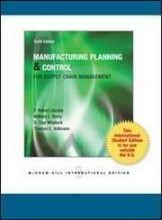Summary: Business Research Techniques For Premaster
- This + 400k other summaries
- A unique study and practice tool
- Never study anything twice again
- Get the grades you hope for
- 100% sure, 100% understanding
Read the summary and the most important questions on Business Research Techniques for premaster
-
Week 1: Setting the scene
This is a preview. There are 5 more flashcards available for chapter 27/08/2018
Show more cards here -
What's the difference between applied research and fundamental (or basic) research?
Fundamental (or basic) research à has a broader view on problems (like all drinks instead of only coke) -
What's the difference between deductive research and inductive research?
Deductive research: uses theory and is going to test the theory by gathering “data” --> test theory;
Inductive research: use data to generate a new theory --> building theory --> more explorative than deductive research --> you observed something and draw a conclusion of it -
Week 2: The research process (step 1 t/m 3 deductive research process)
This is a preview. There are 5 more flashcards available for chapter 03/09/2018
Show more cards here -
When does a business problem occur?
-The actual state is really wrong and costs the company a lot of money
-The actual state is ok, but can be approved -
What makes a good problem statement?
- (second step in deductive research)
- (prelimanary study: reduces the mediators between two variables)
- Formulated in terms of variables and relations
- Open - ended questions
- Stated clearly/ unambiguously
- (is managerially and academically relevent) -
What's a mediating variable/ mediator? Which types are there?
Mediating variable: “why has the x variable effect on your y variable? (also called: mediator, interventing variable)
2 types of mediation:
1.Full mediation
2.Partial mediation
Which one is mine: Depends on your topic and the used literature -
What's a moderating variable / moderator? Which types are there?
Moderating variable: influences the relationship between your independent and dependent variable. For example: making the relationship more negative/ positive (alters the strengt hand sometimes even the direction of the relationship between x and y)
2 types of moderation:
1.Quasi moderation
2.Pure moderation
Which one is mine: use existing academic literature -
What's a conditional process model?
-Conditional process model: including a mediator and a moderator
1.How or why does x affect y: mediator
2.When or for whom the effect is stronger. -
What are hypotheses and what makes a good hypothesis?
A hypothesis is a tentative statement about the coherence between two or more variables (a relationship or a difference).
A good hypothesis is
- derived from theory
- testable (measurable variables)
- Unambiguous -
What are the differences between directional and undirectional hypotheses and when do you use them?
Directional hypotheses (one - sided):
- A merger is likely to decrease employee morale.
- The effect of employee morale on employee productivity is more negative for older employees
Undirectional hypotheses (two - sided):
- A merger is likely to affect employee morale.
- The effect of employee morale on employee productivity depends on employee age.
You use only undirectional hypotheses when both directions are equel likely. Otherwise you use directional hypotheses. -
What's a negative case analysis?
You can also form hypothesis in qualitative studies. If you do so, you have to revise the theory until it is applicable on all of your respondents.
- Higher grades + faster learning
- Never study anything twice
- 100% sure, 100% understanding






























